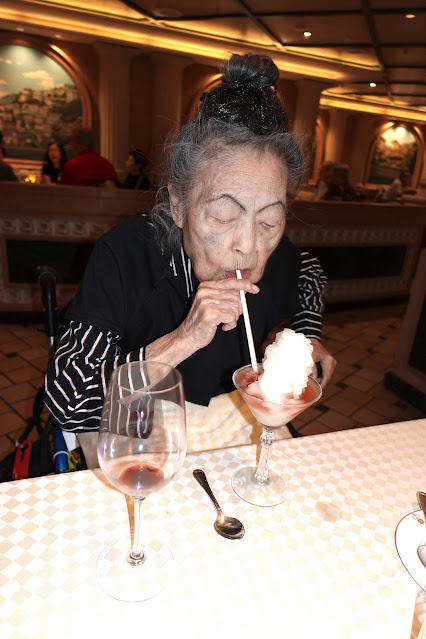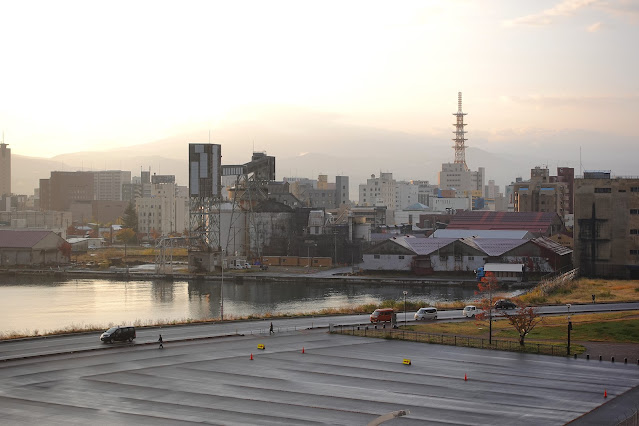
The Israel-Hamas War seems to be escalating. However, Egypt is beginning to allow foreigners to enter from the Rafah Gate in southern part of the Gaza Strip.
Updates here, From the morning New York Times:
That is the conclusion of a new study by Patrick Sharkey and Megan Kang at Princeton. Stricter gun laws passed by 40 states from 1991 to 2016 reduced gun deaths by nearly 4,300 in 2016, or about 10 percent of the nationwide total. States with stricter laws, such as background checks and waiting periods, consistently had fewer gun deaths, as this chart by my colleague Ashley Wu shows:
But on to our cruise. Aomori is the the capital city of Aomori Prefecture. Means Blue Forest, with a current population of around 265,000, the northern most of Honshu Island. There were 319,000 people living here in 2000, and this number has since then been declining, as is the entire country, which was up to 127 million in 2007, but is today down to 125 million.
What distinguishes Aomori is that although it is located far south of Sapporo, Aomori experienced 82 inches of snowfall in 2009, while the heaviest ever for Sapporo was 65 inches in 1939. Mount Hakkoda has a reputation for forming snow monsters, ice covered trees. Take the Hakkoda Ropeway, a 10-minute ride for $12.
Aomori was subjected to air raids in World War II, losing 88% of city structures. The city was connected to Tokyo by highway only in 1979. Their landmark building is the pyramidal Aomori Prefecture Tourist Center, which opened in 1986. It is the only capital city without a national university. For a population of only a quarter million, it does have 45 public elementary schools.
Aomori is known for apples, and I've always wanted to picked one, The apple-picking season began in August and extends into mid November, It is Japan's leading producer of apples, first cultivated during the Meiji Period in 1868, The most famous is Hirosaki Apple Park, home to over 1300 apple trees of 65 different varieties.
Hirosaki Castle is unique in that it was built 1611 and has survived battles and wars. You especially want to visit during cherry blossom period. The buds are especially thick. Also there is Hirosaki Castle Botanical Garden.
The city is best known for the Aomori Nebuta Festival in July. Three million visitors come each year. The event has 20 dynamic nebuta, or enormous lantern floats based on myths or kabuki stories. Anyone welcome to join in the float parade, but you need to wear the correct uniform, the traditional haneto costume, which you purchase for around $50, or rent for $20.
Dining out at Miroku Alley is the prime cuisine site. Local foods are served at Hachinohe Yatai Mura (food stall village) in Hachinohe. This whole alley is one giant outdoor street food party. Down the meal with Aomori Sake, which should not be confused with Awamori, a sochu from Okinawa.
One more attraction is Inakadate's Rice Paddyfield Art. Rice has been cultivated for over 2000 years.
Sunrise at sea.
We were serenaded while the staff began stacking up champagne glasses.
A Silverado Cabernet Sauvignon and McCallan on rocks.
Bob had two margaritas.
Entrance to Sabatini.
I had a Spaghetti Bolognese with giant meatball, plus truffles risotto.
Dessert.
Dinner was excellent, so we decided to return in a few days. After dinner drinks.
This couple was in an adjacent table. They celebrated a birthday. We began to talk to them, and he is a professor at Nagasaki University.
We approach Aomori at sunrise.
-
 The Israel-Hamas War seems to be escalating. However, Egypt is beginning to allow foreigners to enter from the Rafah Gate in southern part of the Gaza Strip. Updates here,
The Israel-Hamas War seems to be escalating. However, Egypt is beginning to allow foreigners to enter from the Rafah Gate in southern part of the Gaza Strip. Updates here, 

























Comments
Post a Comment